Corn, strawberry, sturgeon? Why are we suddenly obsessed with the names of full moons?
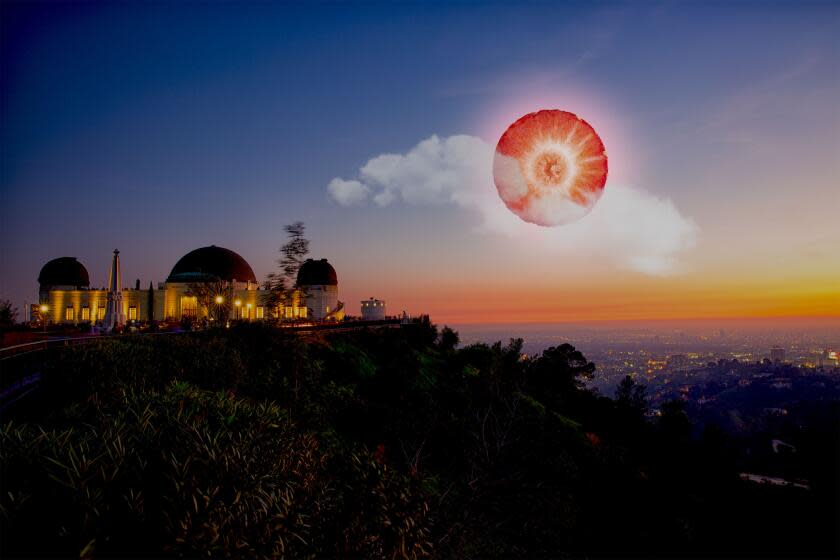
As we hiked to an overlook on a warm evening in late August, a new acquaintance seemed to be dissatisfied with the luminous full moon shining over Griffith Park.
"It's not blue," they remarked.
Though it was dubbed a “blue moon,” it appeared burnt orange as twilight descended. Beautiful, sure, but its accuracy in question — an uneasy compromise for my hiking buddy, a fellow journalist.
Blue is just one of the many qualifiers attached to the moon these days. In fact, this wasn’t just any blue moon, but a super blue moon. Though blue understandably evokes the color, in this case it denotes a second full moon in a month. Earlier in August, the sky saw a full sturgeon moon, a nod to a dinosaur-esque, bewhiskered fish. News headlines and social media posts routinely tease moons with names that imply a spectacle: pink, corn, blood, strawberry. In a parade of evocative superlatives, a regular full moon seems passé. Even a waxing gibbous sounds dull.
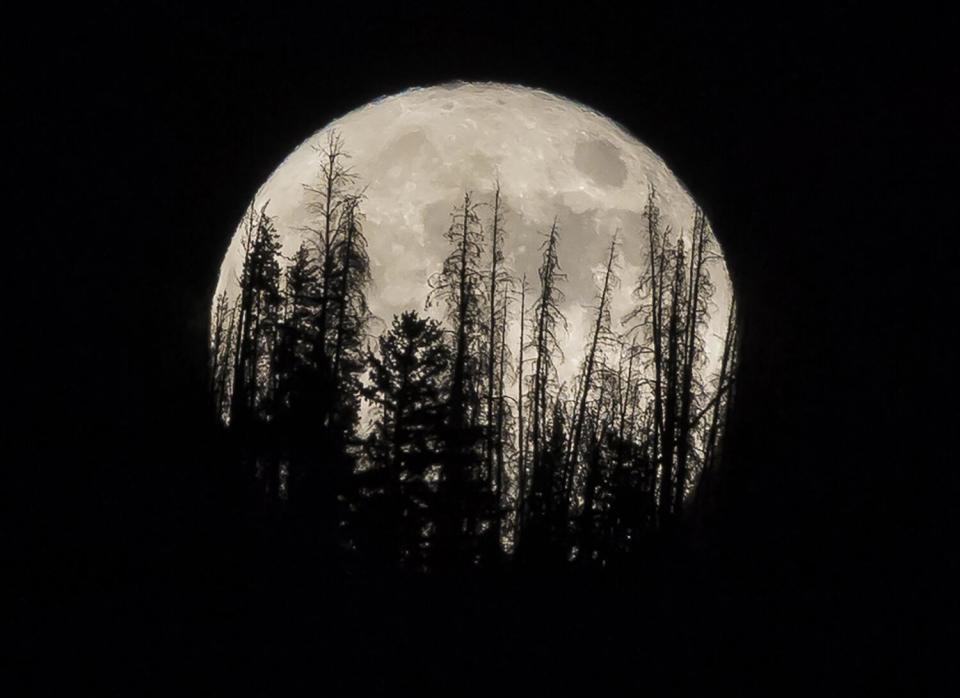
Los Angeles, a hub for New Age thought, is uniquely fertile soil for the lunar renaissance. Just last week, you could find breathwork experiences, yoga sessions, forest bathing and other activities in the full moonlight to celebrate the arrival of the harvest moon.
In the not-so-distant past, a full moon was just a full moon. News outlets didn’t “cover” the moon except for major events: total eclipses and the like. So what happened? Is Instagram to blame? Did the moon get a better PR team?
Communing with the sky — for answers, observation or reflection — is, of course, a timeless practice. But I wanted to find out what was behind the recent moon mania. When I reached out to scientists and spiritualists, both had mixed feelings about the moon's "trendiness." While they celebrated more people paying attending to the sky, some expressed dismay in what they see as people misunderstanding moon-related terms or interacting with them superficially.
“I don't think it is the idea of applying the names, or popularizing this, that is the problem,” said Edwin Krupp, astronomer and longtime director of the Griffith Observatory. “I think it has to do much more with many of those engaged in that are a little thoughtless about the background and the meaning."
Where did the moon names come from, anyway?
Moon names can be lumped into two general categories: There are names that describe celestial phenomena and traditional names handed down from older cultures that typically refer to what’s happening on Earth.
The former includes terms like super, blue and blood, which have taken on their present meaning relatively recently. The latter refers to fantastical-sounding names like wolf, worm and long nights. These names date back to earlier periods — when Native American, medieval European and other cultures turned to cycles in nature to keep time.
Each of the epithets has its own etiology, and some of their origins can be traced to their inception.
Supermoon
“Supermoon,” for example, was coined by astrologer Richard Nolle in 1979 to describe when a full or new moon comes closest to the Earth in its monthly orbit, known as the perigee. It can appear bigger and brighter than a full moon that's farther away, though there’s debate over how noticeable the difference is to the average observer.
Blue moon
In the 16th century, a blue moon meant something was impossible. Fast forward to the 1930s, when the Maine Farmers' Almanac listed a complex calendrical meaning for the term, according to Sky & Telescope magazine. Sky & Telescope ran an article in 1946 that incorrectly interpreted the definition as meaning the second full moon in a month. In 1980, "StarDate," a popular radio program, used blue moon in the same way, citing the article. The new definition stuck, Krupp said.
Read more: Super moon puts on a show for Southern California
Blood moon
A moon takes on a reddish, or blood-like, hue when there’s a total lunar eclipse. Even with the Earth wedged between the sun and moon, sunlight still reaches the lunar surface. Earth’s atmosphere scatters the blue light, while red light travels unimpeded to the surface of the moon.
“Basically what you’re seeing on the moon is a reflection of all the sunrises and sunsets,” said Sarah Noble, lead for lunar science within the planetary science division at NASA headquarters.
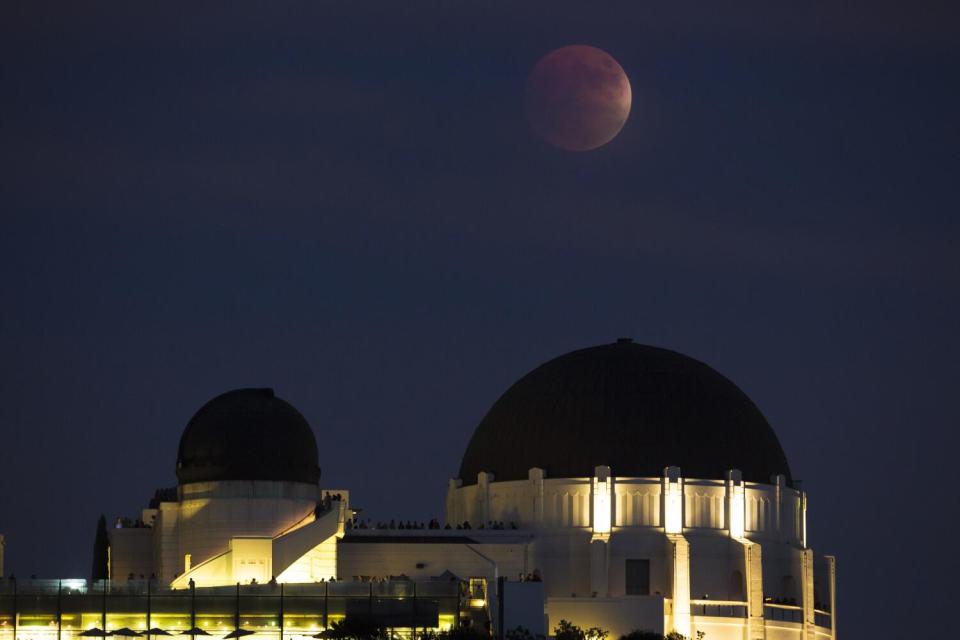
But blood moon has a heavier alternate meaning, Krupp said. Christian ministers John Hagee and Mark Biltz linked a series of four total lunar eclipses with an apocalyptic prophecy. The so-called blood moon prophecy was popularized through books they penned in the 2010s.
Traditional names
In North America, Native Americans bestowed the moon with names that referred to natural events and activities associated with the seasons, drawing inspiration from the weather, animals, hunting and agriculture. These monikers differed based on where tribes lived and the environments they experienced.
Colonial Americans adopted some of these names, drawing primarily from Algonquin tribes who lived in the northeastern U.S. These names, along with some derived from European and other traditions, became distilled into the dozen or so names listed in the Old Farmer’s Almanac — and are still used today.
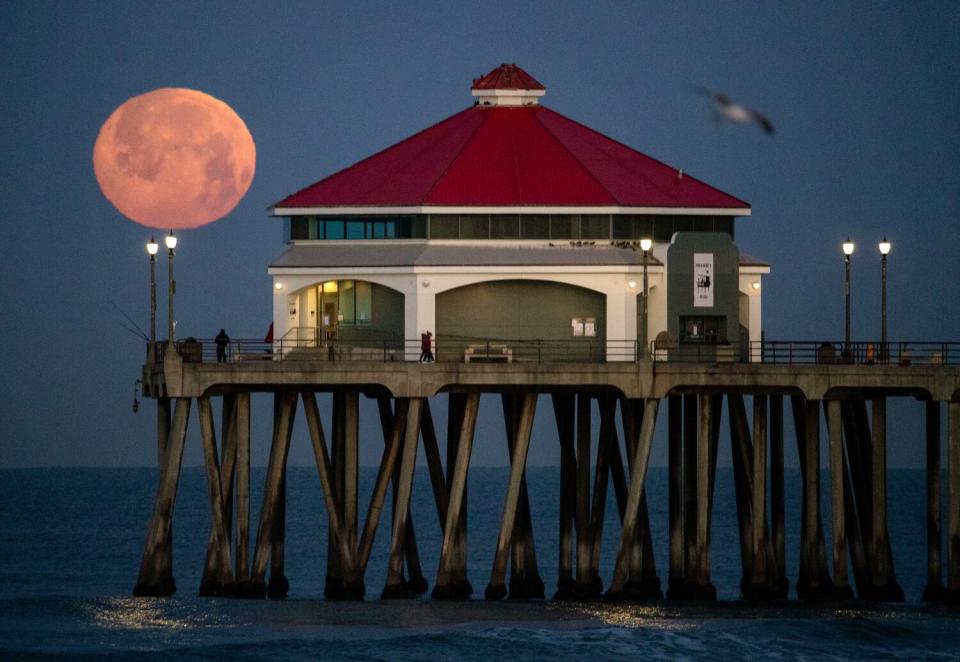
The flower moon, for example, is a Farmer's Almanac-listed name for May’s lunation associated with spring blooms. The harvest moon, the full moon closest to the fall equinox, is associated with farming. During that time, the moon rises around sunset for several days, providing additional light and extending the workday for farmers who need to complete their harvest before the frost sets in.
During the pandemic, more people started looking up
Many see the pandemic as a critical point for moon mania — and also part of broader social and cultural trends that emerged simultaneously.
Spurred by fear and uncertainty, some turned to the sky for answers.
“In 2020, specifically, there was general agreement that masses flocked to astrology,” astrologer Julia Kelley said, referring to her community of celestial diviners.
Amid tumult, there’s something comforting about the predictable, cyclical, and yet changeable, nature of the moon and other celestial bodies, said Kelley, who lives in the San Gabriel Valley.
“Sometimes it can be reassuring to know that there's a full moon in a month, and then the phase will pass," she said. "And next month, we'll have another full moon, and that phase will pass.”
Oak, founder of an eponymous astrology school, tied the pandemic-era surge of interest in all things moon to a “de-emphasis of our capitalist work culture.” Instead of placing work at the top of the totem, people sought to get in touch with themselves, they said.
”When we prioritize our rest, when we prioritize our well-being — which are actually very foundational themes when we learn about the moon in astrology — we recognize that there are just times where we're like 'I don't have the energy to complete this five-day work week.'"
With restaurants, bars and theaters closed, others just needed an outlet outdoors.
Noble, of NASA, said she felt claustrophobic during the pandemic.
“I started to just go outside and stare at the moon a lot,” she said. “But maybe that's just me.”
A frenzy fueled by social media
Astronomers and astrologers pin the popularization of moon epithets to the rise of the internet. Social media furthered the spread. On TikTok, you can find supermoon iPhone photo tutorials, explainers on "the moon and your cycle," full moon astrology rituals and more. On Instagram, there are 2.5 million posts with the #supermoon hashtag.
Some science juggernauts have jumped on the bandwagon, NASA routinely touts multi-hyphenate moon events to its tens of millions of followers. An Instagram post about the Aug. 30 super blue moon garnered 3.4 million likes. “The Moon is doing the most,” the space agency wrote in an X post for the same phenomenon.
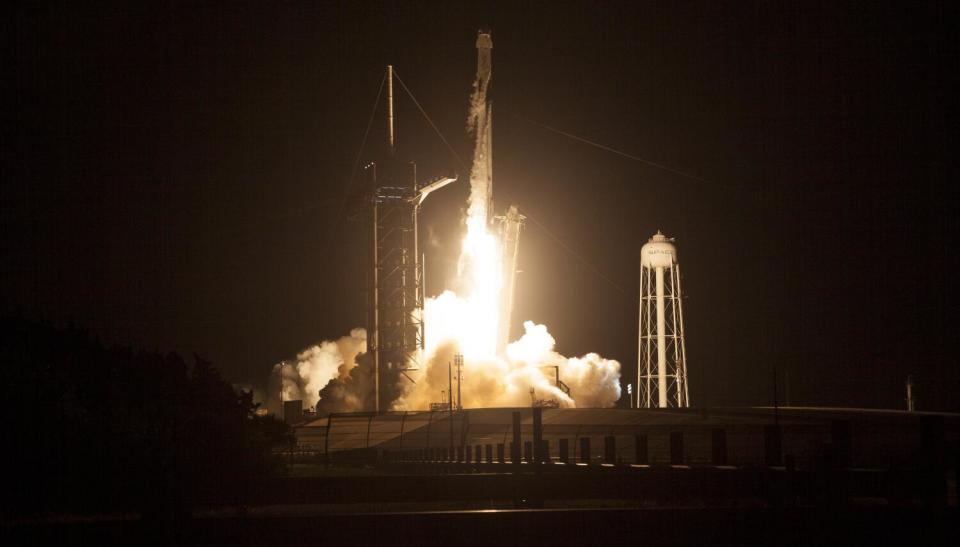
Even before the pandemic, the internet and expanding influence of social media allowed people to more easily tap into disciplines like astronomy and astrology. It’s a lot easier to type “when is the next full moon” into Google than to whip out a dusty almanac or follow Instagram influencers that make learning about your natal chart fun.
With something like the super moon, "once you have a vehicle for mass communication, then everybody sort of picks up on it because it's charming and romantic and satisfying and immediate and personal," Krupp said.
There’s even a geopolitical dimension to moon fever. After a long hiatus in NASA sending humans or robots to the surface of the moon, “we are very soon going to start hitting it pretty hard,” Noble said.
Read more: Ganymede mapped: See best map yet of our solar system's largest moon
She described the interest in the moon as a sudden “global endeavor." In August, India pulled off its first lunar landing of an unmanned craft, becoming the fourth country to make it to the moon’s surface. The following month, Japan launched a moon-bound rocket, with hopes of becoming the fifth. Many nations have their sights set on travel to Mars and beyond, and Noble said the moon is the “best place to go to figure out how to do that.”
In upcoming missions, NASA will explore frigid craters at the lunar south pole where there's evidence of water ice. Water, among other things, could be used to make fuel to power rockets further into the solar system.
The spiritual side of the moon: Astrology, myths and magic
From time immemorial, people have considered the moon more than just a big clock or pretty night light. Many people are turning to the moon now for its spiritual properties, just as they’d done for milleniums. While astronomers are often quick to distance themselves from astrology, there’s some overlap in the phenomena they observe.
“Our ancestors yearned for heaven. We do, too,” Krupp writes in “Beyond the Blue Horizon: Myths & Legends of the Sun, Moon, Stars and Planets.”
Read more: The working witches of Los Angeles just want you to be your best self
Of the eight moon phases, astrologer Kelley said the new and full moon is where there's the most interest.
In astrology, the new moon — when it’s least visible — is the time to set intentions and plant proverbial seeds, she said. When it’s full, it’s time to harvest what you’ve sown, such as a manifestation. Rather than start something new, Kelley said this is the time to let things go.
While some astrologers discount the “supermoon” as a buzzword, Kelley said it's like “turning the volume up on it.”
“It might feel more impactful,” she said. “We're receiving perhaps more energy, astrologically, from that moon.”
Astrology looks beyond the moon phases to explain the natural world. For example, each full moon lines up with a constellation that represents a zodiac sign. The first full moon in August was in Aquarius, while the second one was in Pisces. Kelley said people with those signs might have been more sensitive to the moon’s influence.
This is just the tip of the ancient practice's iceberg.
How can you become more in touch with the moon?
So now you know the moon is, like, so hot right now (but also very cold in places because there’s no atmosphere). How can you get in touch with your lunar leanings?
From sound baths to meditations to hikes, there are a wealth of full moon events in the Los Angeles area that are just an Eventbrite search away.
An easy way to commune with the moon is to go outside and look at it. One of the moon’s draws is that it’s easy to see without driving hours to escape city lights or dropping big bucks on a powerful telescope.
Still, it’s ideal to get away from lights and as high up as feasible. Look for places where there aren’t overhead trees or buildings to block your view.
There’s a not-entirely-understood visual illusion that makes the moon appear bigger on the horizon. So if you catch it when it rises or sets, you might get an eyeful.
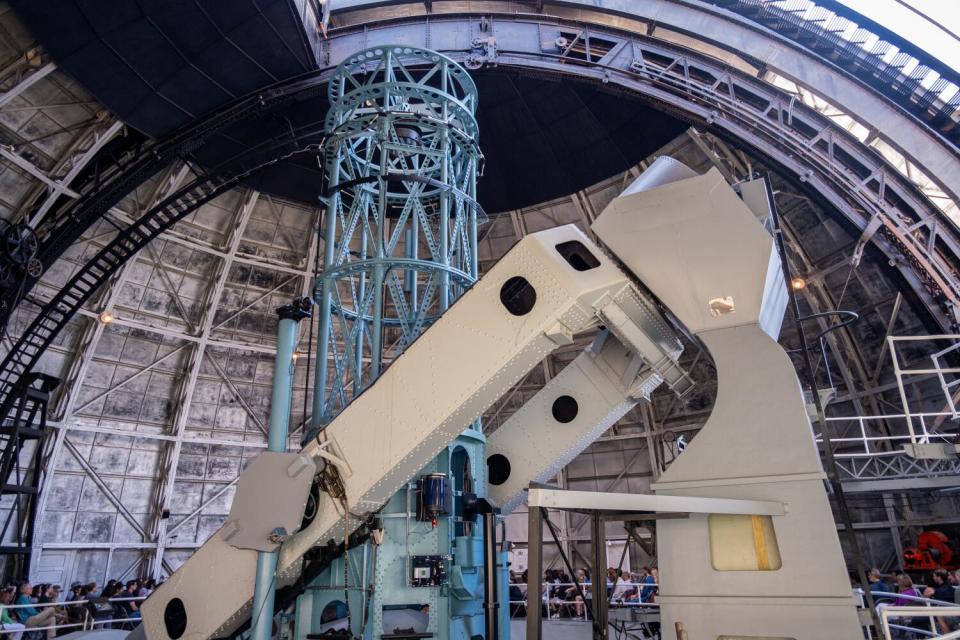
Elevated areas like the Mt. Wilson and Griffith observatories, the Verdugos, Echo Mountain and various spots in the foothills of the San Gabriel Mountains allow viewers to take in the moon on the horizon, said Cameron Hummels, astrophysicist and outreach director for Caltech's astronomy department. If you'd prefer some guidance, look for full moon group hikes hosted by Usal and other organizations.
Read more: Here’s where to be as the moon and meteors show off
Lunar authorities who are ambivalent about the buzz tend to soften when considering the joy it brings people.
Krupp described the way droves of people descended on Griffith a few years ago to take in a special super moon.
“It was like a pilgrimage,” he said. “And so you look at the building and the place, and it's filled with people who are drawn closer to the sky, drawn closer to Griffith Observatory, whatever that may mean for them at the moment, and there's no way you can argue that's a bad thing. That's a terrific thing.”
This story originally appeared in Los Angeles Times.

